Adorning Your Garden with Ceramic Pottery
Have you ever walked through a garden and felt a sense of wonder at the vibrant colors and unique textures that surround you? One of the best ways to elevate your garden's aesthetic is by incorporating ceramic pottery. Not only does it add a splash of color and artistry, but it also serves practical purposes that can enhance the health of your plants. Imagine a beautifully arranged collection of pots in various shapes and sizes, each telling its own story while working harmoniously with the natural elements. In this article, we’ll explore how ceramic pottery can transform your garden into a stunning sanctuary, while also providing you with tips on selecting, maintaining, and creatively using these beautiful pieces.
When it comes to garden design, ceramic pottery is like the icing on the cake. It can serve as a focal point, a backdrop, or even a subtle accent depending on how you choose to use it. The versatility of ceramic pots means they come in a myriad of styles, colors, and sizes, allowing you to express your personal taste. Whether you prefer a rustic, earthy look or a sleek, modern vibe, there's a ceramic piece that can fit your vision perfectly. So, let’s dive deeper into how to choose the right pottery that will not only complement your garden but also stand the test of time.
Incorporating ceramic pottery into your garden design is not just about aesthetics; it’s about creating a thriving environment for your plants. These pots provide excellent insulation, helping to maintain the right temperature for your plants' roots. This is crucial, especially when the weather is unpredictable. Additionally, ceramic pots are known for their ability to retain moisture, which can be a game-changer during hot summer months. With proper selection and care, your ceramic pottery can become a long-lasting investment that beautifies your outdoor space while promoting healthy plant growth.
So, are you ready to transform your garden with the charm of ceramic pottery? Let’s explore the essential factors to consider when choosing the right pieces for your outdoor oasis.

Choosing the Right Ceramic Pottery
When it comes to for your garden, it’s not just about picking something that looks pretty. You want to ensure that your choices align with the overall design and functionality of your outdoor space. So, what should you consider? First off, think about the size of the pots. A massive pot can easily overwhelm a small corner of your garden, while tiny pots might get lost in a larger landscape. Aim for a balance that complements the scale of your garden.
Next, let’s talk about color. Ceramic pots come in a stunning array of colors, and the right hue can make all the difference. For instance, if your garden is bursting with vibrant flowers, a neutral-colored pot can provide a lovely contrast, allowing your plants to shine. On the flip side, if your garden is more subdued, a bright, bold pot can serve as a delightful focal point. It’s all about creating a visual harmony that resonates with your personal style.
Style is another crucial factor. Are you going for a rustic vibe, a modern minimalist look, or something more eclectic? The style of your ceramic pottery should reflect the overall theme of your garden. For instance, if you have a whimsical garden filled with playful sculptures and colorful blooms, consider pots with unique shapes or artistic designs. Conversely, if your space is sleek and contemporary, opt for pots with clean lines and subtle finishes.
Also, don’t forget about functionality. Some ceramic pots come with drainage holes, while others do not. If you’re planting herbs or succulents that prefer well-drained soil, make sure to choose pots that facilitate this. Additionally, consider the weight of the pottery. Heavier pots are less likely to tip over in strong winds but can be challenging to move around. Think about where you want to place your pots and how much maintenance you’re willing to put in.
To sum it up, here are some key points to remember when choosing ceramic pottery for your garden:
- Size: Make sure the pot size matches your garden scale.
- Color: Choose colors that either contrast or complement your plants.
- Style: Reflect your garden’s theme through your pottery choices.
- Functionality: Consider drainage and weight based on your plant needs.
By keeping these factors in mind, you can select ceramic pottery that not only enhances the beauty of your garden but also supports the health and growth of your plants. Remember, your garden is an extension of your personality, and the right pottery can help express that in the most stunning way!

Benefits of Ceramic Pottery in Gardens
Ceramic pottery is not just a pretty face in the garden; it brings a plethora of benefits that can elevate your gardening experience to new heights. Imagine walking through your garden, surrounded by vibrant blooms and lush greenery, all elegantly framed by the earthy tones of ceramic pots. Not only do they enhance the visual appeal, but they also play a significant role in creating a thriving ecosystem for your plants. Let's dive deeper into the manifold advantages of incorporating ceramic pottery into your outdoor space.
One of the standout features of ceramic pots is their durability. Unlike plastic or metal, ceramic is less prone to fading and cracking under harsh weather conditions. This resilience means that your investment in beautiful pottery will pay off for years to come. Furthermore, ceramic pots are often glazed, which adds an extra layer of protection against the elements, ensuring your pots stay vibrant and intact.
Another significant advantage is the insulation properties of ceramic pottery. These pots help regulate soil temperature, acting like a protective barrier against extreme weather. When the sun blazes down, ceramic keeps the soil cooler, and during colder months, it helps retain warmth. This regulation is crucial for the health of your plants, as it creates a stable environment for their roots to thrive. In fact, studies have shown that plants in ceramic pots often exhibit better growth patterns compared to those planted in less insulating materials.
So, how exactly does this insulation work? The science behind it is fascinating. Ceramic is a natural material that allows for air circulation while still retaining moisture. This means that not only do your plants enjoy a more consistent temperature, but they also benefit from improved moisture retention. The ability of ceramic to hold moisture can be a game-changer, especially during hot summer months when plants are at risk of drying out.
Understanding how ceramic pottery maintains consistent soil temperatures can aid in plant health. The porous nature of ceramic allows for a slow release of moisture, which helps to keep the soil cool during the day and warm at night. This temperature regulation is vital for plants that are sensitive to fluctuations, ensuring they have the best chance to thrive.
Moreover, ceramic pots can retain moisture better than other materials, like plastic. This is especially important for plants that require consistent watering. The natural clay used in ceramic pottery absorbs water, which then slowly evaporates, keeping the soil moist for longer periods. This not only conserves water but also reduces the need for frequent watering, which can be a blessing for busy gardeners.
In addition to these practical benefits, ceramic pottery also brings a visual appeal that can transform any garden space. With a wide variety of colors, shapes, and designs available, ceramic pots can complement any garden style, from rustic to modern. Imagine vibrant blue pots contrasting with green foliage or earthy terracotta pots blending seamlessly with a natural landscape. The aesthetic impact is undeniable and can create a harmonious balance in your garden.
To summarize, the benefits of ceramic pottery in gardens are multifaceted. They offer durability, excellent insulation properties, moisture retention, and a stunning visual appeal. By choosing ceramic pots for your garden, you are not just making a decorative choice; you are investing in the health and longevity of your plants.
- How do I choose the right size of ceramic pot for my plants? Consider the mature size of your plants and select a pot that allows for growth. A general rule is to choose a pot that is 1-2 inches larger in diameter than the current pot.
- Can ceramic pots break in winter? Yes, ceramic pots can crack if they freeze. It's essential to store them properly during the winter months to avoid damage.
- How often should I water plants in ceramic pots? It depends on the plant type and environmental conditions, but generally, check the soil moisture regularly and water when the top inch feels dry.
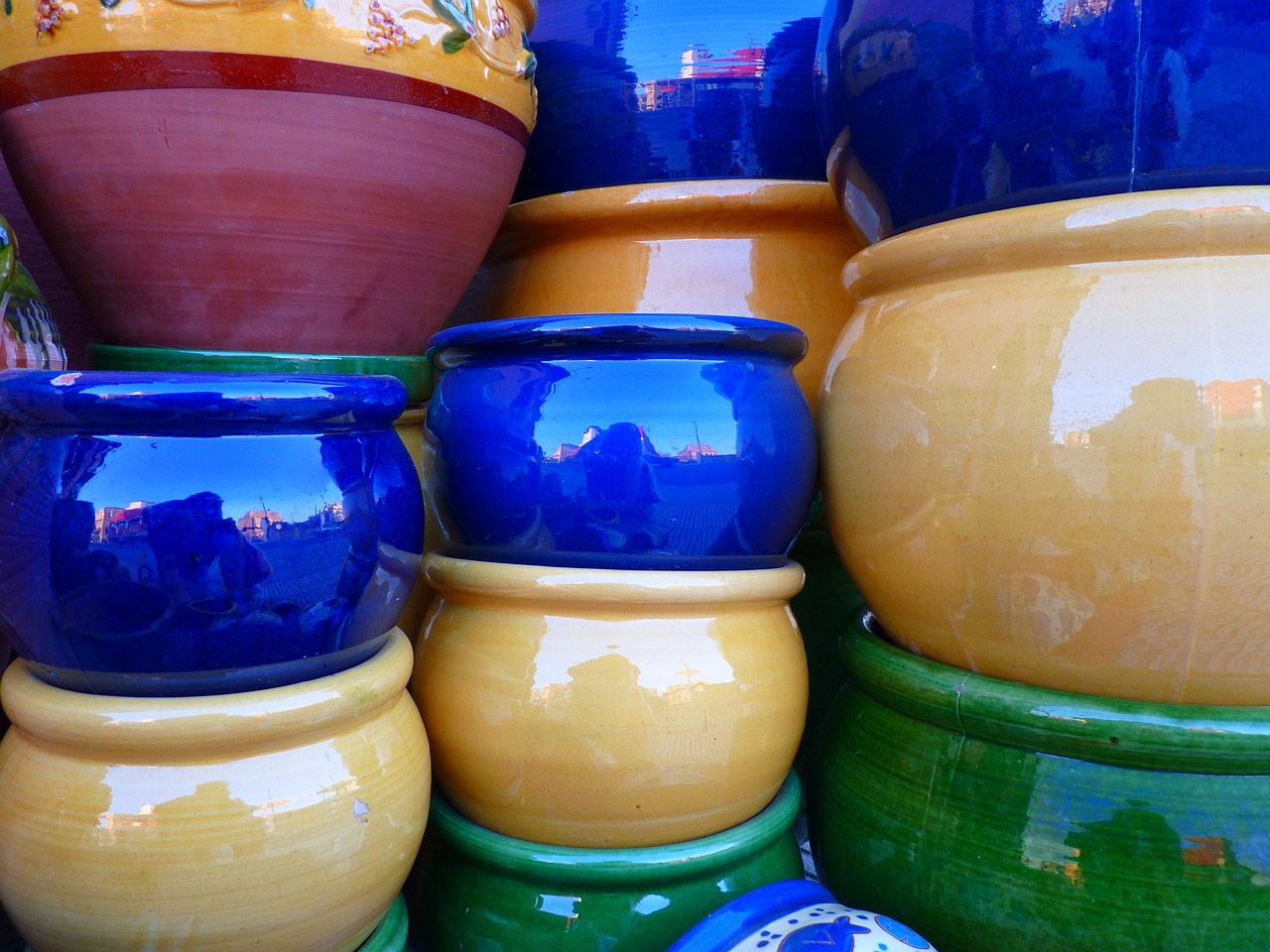
Insulation Properties
When it comes to nurturing your garden, the of ceramic pottery can be a game changer. Imagine your plants nestled in cozy pots that not only hold soil but also act as protective shields against the harsh elements. Ceramic pots are known for their ability to regulate soil temperature, which is crucial for the health of your plants. This regulation happens because ceramic is a dense material that doesn't heat up or cool down as quickly as other materials, like plastic or metal. As a result, your plants enjoy a more stable environment, which can lead to better growth and resilience.
But how does this insulation work? Think of ceramic pottery as a thermal blanket for your plants. During the hot summer months, ceramic pots can keep the soil cooler, preventing plants from overheating and stressing out. Conversely, in the chilly winter months, these same pots help retain warmth, ensuring that the roots of your plants stay cozy even when the temperatures drop. This consistent temperature regulation can be a significant factor in promoting healthy root development and overall plant vitality.
Moreover, the insulation properties of ceramic pottery also play a vital role in moisture retention. When the soil temperature is stable, it helps maintain moisture levels, reducing the frequency of watering you need to do. This is particularly beneficial for busy gardeners or those who may not have the time to tend to their plants daily. By choosing ceramic pots, you are essentially investing in a system that works to keep your plants happy and thriving, even with minimal intervention.
In addition to their practical benefits, ceramic pots come in a variety of styles and colors, allowing you to express your creativity while providing an insulated environment for your plants. Whether you prefer a rustic terracotta look or a sleek, modern design, there’s a ceramic pot that can complement your garden aesthetic while serving its functional purpose. So, when you’re selecting pots for your garden, remember that the right choice can provide not just beauty, but also the essential protection your plants need to flourish.
- What are the benefits of using ceramic pots over plastic pots?
Ceramic pots offer superior insulation, moisture retention, and aesthetic appeal compared to plastic pots, making them a great choice for gardeners looking for both functionality and style. - Do ceramic pots break easily?
While ceramic pots can be more fragile than plastic, choosing high-quality, thick-walled ceramic can enhance durability. Additionally, proper care and winter storage can help prevent breakage. - How do I know what size ceramic pot to choose?
Consider the size of the plant and its root system. A good rule of thumb is to select a pot that is 1-2 inches larger in diameter than the current pot of the plant.

Temperature Regulation
When it comes to gardening, understanding the capabilities of ceramic pottery can significantly enhance your plants' health and growth. Ceramic pots are known for their ability to maintain a stable temperature for the soil within them, acting almost like a cozy blanket for your plants. This is particularly important because plants thrive within specific temperature ranges, and any drastic changes can lead to stress, stunted growth, or even death.
So, how does this work? The science behind ceramic pottery’s temperature regulation lies in its material properties. Unlike plastic pots, which can heat up quickly under the sun and cool down just as fast at night, ceramic pots absorb heat during the day and release it slowly at night. This thermal mass effect helps to keep the soil temperature more consistent, creating a more favorable environment for your plants.
Here are a few key points about how ceramic pottery contributes to temperature regulation:
- Consistent Soil Temperature: By maintaining a stable temperature, ceramic pots help prevent the shock that plants can experience from sudden temperature changes.
- Improved Root Health: Roots are sensitive to temperature fluctuations. A stable environment promotes healthy root development, which is essential for nutrient uptake and overall plant vitality.
- Protection Against Frost: In cooler climates, ceramic pots can provide a buffer against frost damage, as they help keep the soil warmer than the surrounding air.
In addition to these benefits, using ceramic pottery can also lead to better moisture retention, which further aids in maintaining a stable temperature. When the soil stays moist, it not only helps in regulating temperature but also ensures that your plants are adequately hydrated. This is a win-win situation for any gardener aiming for a thriving garden.
Ultimately, choosing ceramic pottery for your plants is like providing them with a safe haven where they can grow and flourish. The next time you’re in the garden center, consider the long-term benefits of these beautiful pots. They are not just decorative elements; they are essential tools that can help you create a more resilient and vibrant garden.
- How do I choose the right size ceramic pot for my plants?
When selecting a ceramic pot, consider the size of your plant's root system. A pot that is too small can restrict growth, while one that is too large may retain too much moisture. - Can ceramic pots crack in winter?
Yes, ceramic pots can crack if they are not properly cared for during winter. It's essential to store them in a sheltered location or wrap them to protect against freezing temperatures. - How can I clean my ceramic pots?
Regular cleaning can be done using a soft brush and mild soap. Avoid harsh chemicals that can damage the surface of the ceramic.
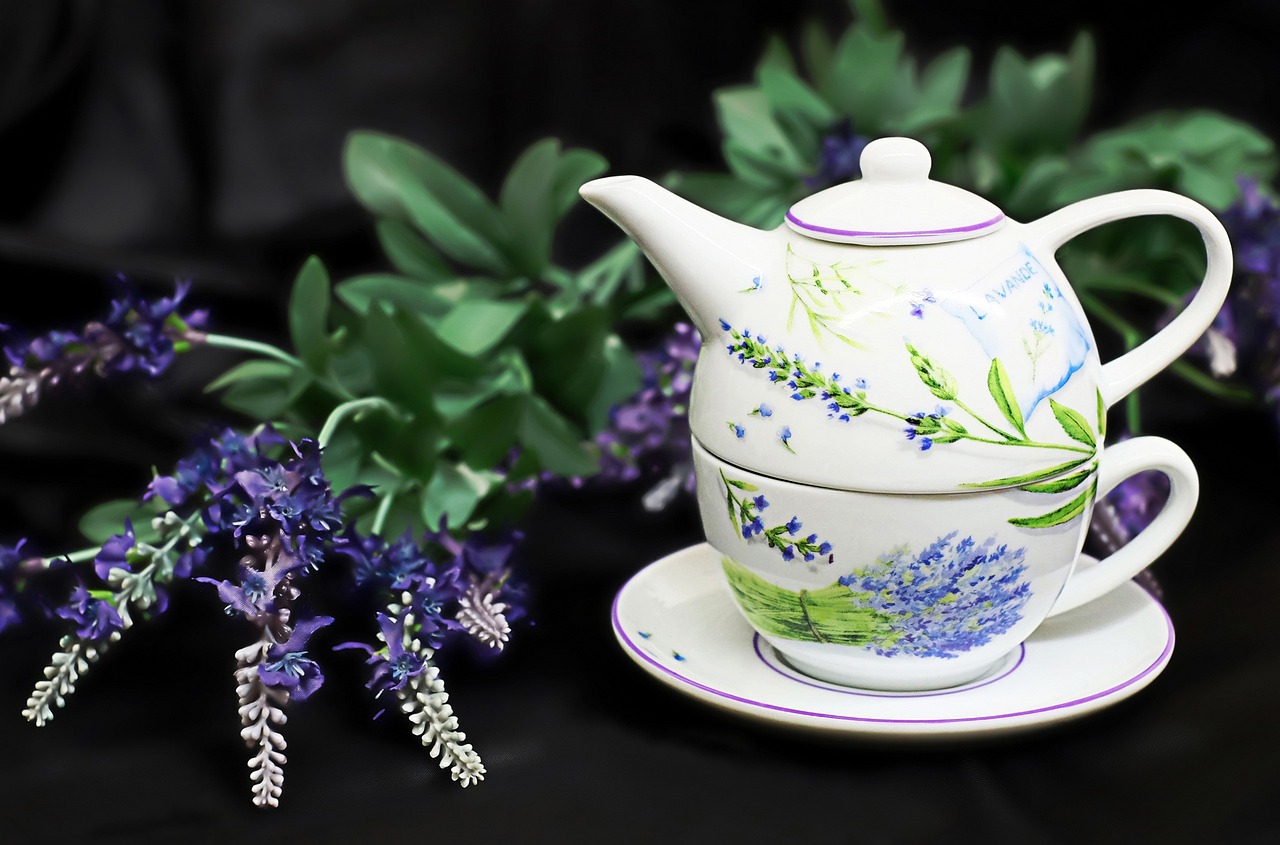
Moisture Retention
When it comes to nurturing your plants, moisture retention is a game-changer, and ceramic pots excel in this area. Unlike plastic or metal containers, ceramic pottery is porous, allowing for a natural exchange of air and moisture. This means that while water can seep through the walls of the pot, it also creates a microclimate that keeps the soil consistently moist. Imagine your plants basking in a cozy, humid environment, akin to a tropical paradise, where they can thrive without the stress of drying out too quickly.
One of the most significant advantages of ceramic pots is their ability to retain moisture longer than other materials. This is particularly beneficial during hot summer months when plants are prone to wilting. The clay material absorbs water and slowly releases it back into the soil, providing a steady supply of hydration. This feature not only reduces the frequency of watering but also helps prevent overwatering, a common issue that can lead to root rot.
To maximize moisture retention, consider the following tips when using ceramic pottery in your garden:
- Choose the Right Size: Ensure that the pot size is appropriate for your plant. A pot that is too small will dry out quickly, while a larger pot can hold more moisture.
- Use Quality Potting Soil: Opt for a high-quality, moisture-retentive potting mix that complements the ceramic pot's natural properties.
- Watering Techniques: Water your plants thoroughly, allowing excess water to drain out. This encourages the ceramic to absorb moisture effectively.
- Add Mulch: A layer of mulch on top of the soil can further help to retain moisture and regulate temperature.
Ultimately, the moisture-retaining properties of ceramic pottery not only support healthy plant growth but also create a more forgiving environment for gardeners. By understanding how to leverage these benefits, you can cultivate a flourishing garden that stands resilient against the elements. So, next time you’re selecting pots for your garden, remember that ceramic pottery isn’t just about aesthetics; it’s a smart choice for keeping your plants happy and hydrated!
Q: How often should I water plants in ceramic pots?
A: The watering frequency can vary based on the plant type and climate, but generally, you should check the soil moisture regularly. If the top inch of soil feels dry, it’s time to water.
Q: Can I use ceramic pots for all types of plants?
A: Yes, ceramic pots are versatile and can be used for a variety of plants, from succulents to larger flowering plants. Just ensure that the pot has drainage holes to prevent waterlogging.
Q: How do I prevent my ceramic pots from cracking in winter?
A: To protect ceramic pots from freezing temperatures, consider bringing them indoors or covering them with protective materials. You can also store them upside down to prevent water accumulation.

Aesthetic Appeal
The aesthetic appeal of ceramic pottery is one of its most captivating features, transforming ordinary gardens into extraordinary landscapes. Imagine walking through your garden, surrounded by vibrant flowers and lush greenery, only to be greeted by an array of beautifully crafted ceramic pots. It’s like stepping into a living art gallery! The colors, shapes, and textures of ceramic pottery can create a stunning visual impact, drawing the eye and enhancing the overall beauty of your outdoor space.
When choosing ceramic pieces, you have a plethora of options to explore. From sleek, modern designs to rustic, hand-painted pots, the variety available allows you to express your personal style. You might opt for bold colors that pop against the greenery or subtle earth tones that blend harmoniously with nature. Each piece can serve as a focal point or an accent, depending on how you arrange them in your garden. For instance, a large, vibrant pot filled with cascading flowers can act as a stunning centerpiece, while smaller pots can line pathways or nestle among your plants, adding layers of interest.
Furthermore, ceramic pottery is not just about color and shape; it's also about texture. The smooth finish of glazed pottery contrasts beautifully with the roughness of natural stone or wood, creating a dynamic interplay that can elevate your garden's design. Imagine the tactile experience as you run your fingers across a beautifully crafted pot, feeling the cool, smooth surface against the backdrop of your warm, sunlit garden. It’s these sensory experiences that make ceramic pottery a fantastic addition to your outdoor environment.
Another exciting aspect of ceramic pottery is its versatility. You can use it in various ways to enhance your garden’s aesthetic:
- Planters: Use different sizes and shapes to create a layered effect.
- Decorative Elements: Incorporate unique pieces as standalone art.
- Water Features: Use ceramic bowls or pots to create tranquil water installations.
In addition to their visual appeal, ceramic pots can also reflect your personality and creativity. You might choose to paint or decorate plain pots, making them truly one-of-a-kind. This DIY approach allows you to infuse your garden with your unique flair, turning each piece into a conversation starter. Imagine your friends admiring your artistic touch while sipping lemonade on a sunny afternoon!
Ultimately, the aesthetic appeal of ceramic pottery lies in its ability to transform a simple garden into a vibrant, personalized oasis. By thoughtfully selecting and arranging your ceramic pieces, you can create a stunning outdoor space that not only captivates the eye but also soothes the soul. So why not start exploring the world of ceramic pottery today? Your garden is waiting for a splash of color and creativity!
Q1: How do I choose the right size of ceramic pots for my plants?
A1: Consider the size of your plants and their root systems. Larger plants require bigger pots to accommodate growth, while smaller plants can thrive in petite containers. A general rule of thumb is to select a pot that is at least 1-2 inches wider in diameter than the plant's current pot.
Q2: Can I use ceramic pottery for outdoor plants in winter?
A2: Yes, ceramic pottery can be used outdoors in winter, but it’s essential to protect it from freezing temperatures. Consider bringing pots inside or covering them with protective materials to prevent cracking.
Q3: How can I maintain the appearance of my ceramic pots?
A3: Regular cleaning is crucial. Use a soft brush and mild soap to remove dirt and algae. Rinse thoroughly and allow them to dry completely before reusing.
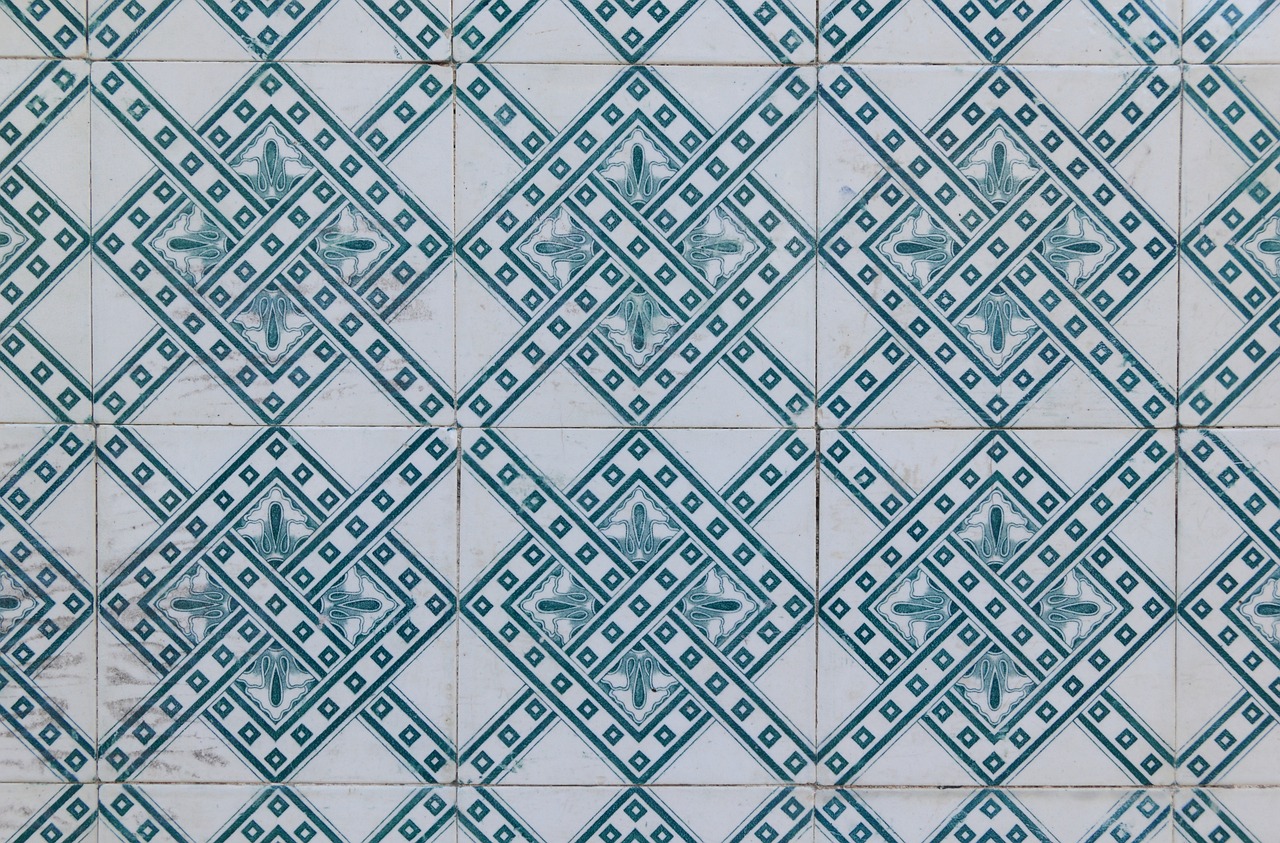
Care and Maintenance of Ceramic Pottery
Taking care of your ceramic pottery is crucial to ensure it remains a stunning centerpiece in your garden for years to come. Just like any other beautiful item in your home or garden, ceramic pots require a bit of love and attention to maintain their charm and functionality. The first step in proper care is understanding that ceramic is a porous material, which means it can absorb moisture and may be susceptible to staining or algae growth if not maintained correctly.
One of the most important aspects of maintaining your ceramic pots is regular cleaning. Over time, dirt, dust, and algae can accumulate, dulling the vibrant colors and patterns of your pottery. A simple cleaning routine can keep your pots looking fresh and inviting. For most ceramic pottery, a gentle wash with warm soapy water and a soft sponge is all you need. Avoid harsh chemicals or abrasive scrubbers, as they can scratch the surface and ruin the finish. If you encounter stubborn stains, a mixture of baking soda and water can work wonders. Just apply it to the affected area, let it sit for a few minutes, and then scrub gently.
To help you keep track of your cleaning routine, consider the following tips:
- Clean your pots at least once a month during the growing season.
- Inspect your pottery for cracks or chips regularly to prevent further damage.
- Consider using a sealant designed for ceramic to provide extra protection against stains.
As winter approaches, protecting your ceramic pottery becomes essential. Freezing temperatures can cause the material to crack or break, leading to costly replacements. If you live in an area with harsh winters, it’s wise to bring your pots indoors or at least to a sheltered location. If indoor storage isn’t an option, consider wrapping your pots in bubble wrap or burlap to provide insulation. Additionally, empty the pots of soil and water to prevent any residual moisture from freezing inside. This simple step can save you from heartache come spring when you’re eager to enjoy your garden again.
Lastly, if you’re looking to give your ceramic pottery a little extra flair, consider incorporating decorative elements like pebbles or stones at the bottom of the pots. Not only do they enhance drainage, but they also add a unique aesthetic touch that can elevate your garden’s overall look. Remember, a little care goes a long way in keeping your ceramic pottery a vibrant part of your garden landscape.
Q: How often should I clean my ceramic pots?
A: It’s recommended to clean your ceramic pots at least once a month during the growing season to prevent dirt and algae buildup.
Q: Can I leave my ceramic pottery outside during winter?
A: It's best to bring your ceramic pottery indoors or to a sheltered area during winter to prevent cracking from freezing temperatures.
Q: What should I do if my ceramic pot gets stained?
A: For stubborn stains, try using a mixture of baking soda and water. Apply it to the stain, let it sit, and then scrub gently with a soft sponge.
Q: Is there a way to protect my ceramic pots from damage?
A: Yes! You can use a sealant designed for ceramic to provide extra protection against stains and scratches. Additionally, wrapping your pots in bubble wrap during winter can help insulate them.
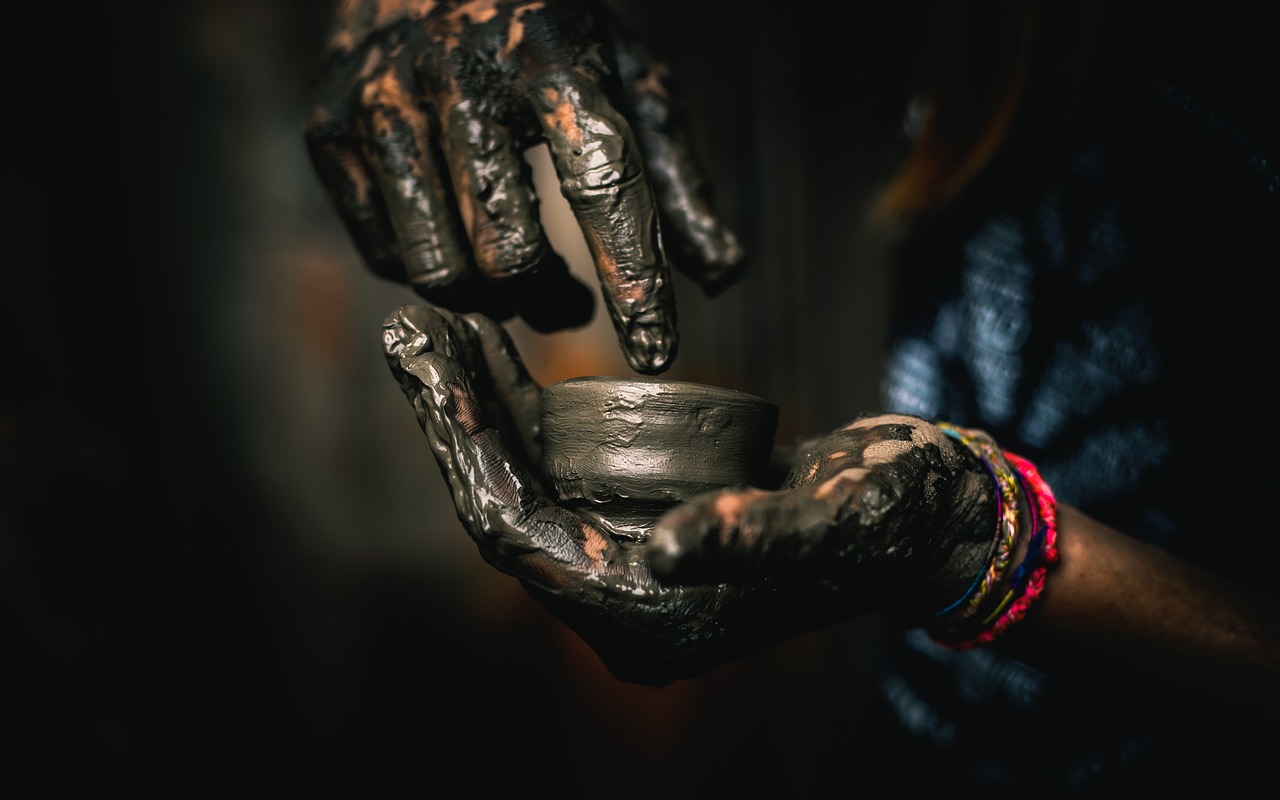
Cleaning Techniques
Keeping your ceramic pottery clean is not just about aesthetics; it's essential for the health of your plants and the longevity of the pottery itself. Over time, dirt, algae, and mineral deposits can accumulate on the surface of your pots, making them look dull and potentially harboring harmful bacteria. So, how do you ensure your beautiful ceramic pieces remain in pristine condition? Let's dive into some effective cleaning techniques that will help you maintain your garden's charm.
First and foremost, it's important to choose the right cleaning materials. Avoid using abrasive cleaners or scrubbing pads, as these can scratch the surface of your pottery, leading to chips and cracks. Instead, opt for a gentle dish soap mixed with warm water. This combination is effective in breaking down grime without damaging the ceramic. Use a soft sponge or cloth to wipe down the exterior and interior of the pots. If you encounter stubborn stains, a paste made from baking soda and water can work wonders. Just apply the paste, let it sit for a few minutes, and then gently scrub with a sponge.
After cleaning, it's crucial to rinse your pots thoroughly to remove any soap residue. Leftover soap can be harmful to your plants, so ensure that you give them a good rinse under running water. Once rinsed, allow your ceramic pots to air dry completely before reusing them. This step is vital because moisture trapped in the pots can lead to mold growth, which is detrimental to plant health.
For those who are looking for a more thorough cleaning regimen, consider the following cleaning schedule:
| Frequency | Cleaning Method |
|---|---|
| Weekly | Wipe down with a damp cloth to remove dust and light debris. |
| Monthly | Deep clean with soapy water and a soft sponge. |
| Seasonally | Inspect for cracks and chips, and clean thoroughly with baking soda paste if needed. |
Lastly, if you notice any significant buildup of algae or mineral deposits, a vinegar solution can be an effective treatment. Mix equal parts of white vinegar and water, apply it to the affected areas, and let it sit for about 10-15 minutes before scrubbing gently. Rinse thoroughly afterward. This method not only cleans but also helps to disinfect your pots.
By incorporating these cleaning techniques into your gardening routine, you can ensure that your ceramic pottery remains a stunning focal point in your garden, enhancing both its beauty and the health of your plants. Remember, a little care goes a long way in preserving the charm of your outdoor space!
Q: How often should I clean my ceramic pots?
A: It's recommended to wipe them down weekly, do a deeper clean monthly, and inspect them seasonally.
Q: Can I use bleach to clean my ceramic pots?
A: It's best to avoid bleach, as it can be too harsh and may damage the ceramic. Stick to gentle dish soap and vinegar solutions for safe cleaning.
Q: What should I do if my ceramic pot has a crack?
A: If the crack is small, you can try sealing it with a waterproof sealant. However, if it's large or compromises the pot's integrity, it may be best to replace it.
Q: Is it okay to leave ceramic pots outside in winter?
A: It's advisable to bring them indoors or store them in a sheltered area to prevent cracking due to freezing temperatures.
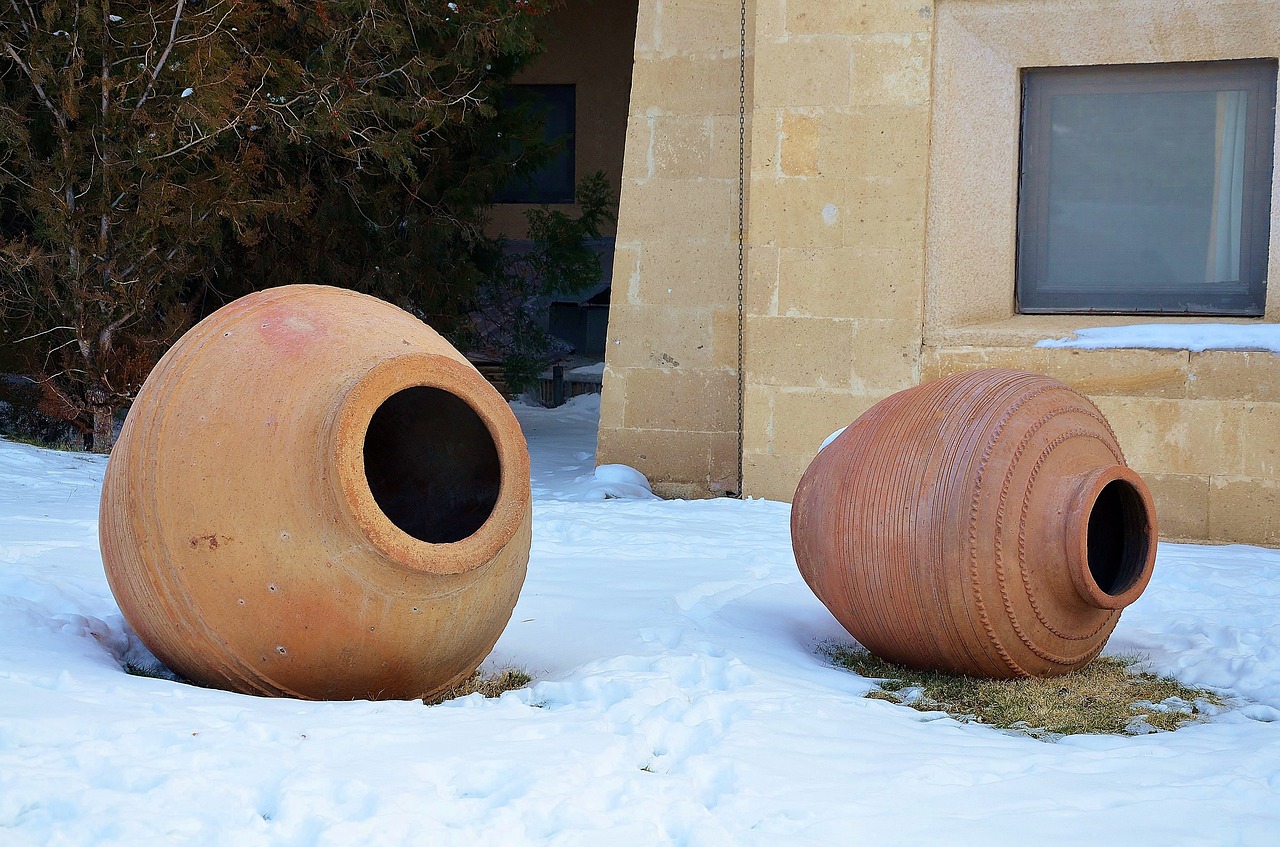
Winter Storage Tips
As the winter chill creeps in, it’s time to think about how to best protect your beloved ceramic pottery from the harsh elements. Just like you wouldn’t leave your favorite sweater out in the snow, your garden pots deserve a cozy retreat during the cold months. To ensure they remain intact and beautiful for the next planting season, follow these essential tips.
First and foremost, consider cleaning your ceramic pots before storing them away. This step is crucial, as it prevents any lingering dirt or algae from causing damage over time. Use a soft brush and a mixture of warm water and mild soap to gently scrub the surfaces. Rinse them thoroughly and let them dry completely. Storing damp pots can lead to mold growth or even cracks when temperatures drop!
Next, when it comes to storage location, choose a sheltered area that’s away from direct exposure to freezing temperatures. A garage, shed, or even a basement can serve as the perfect hideaway for your pottery. If you’re short on space, consider stacking smaller pots inside larger ones, but ensure they’re completely dry to avoid moisture buildup that could freeze. If you must keep them outside, placing them in a shaded area can help protect them from the harshest weather.
Another important aspect to consider is insulation. If you’re worried about your pots cracking, try wrapping them in bubble wrap or old blankets. This extra layer of protection can cushion them against sudden temperature changes and physical impacts. Just think of it as giving your pots a warm winter coat!
Additionally, if your ceramic pots are particularly large and heavy, it might be a good idea to elevate them off the ground. You can use wooden pallets or bricks to lift them slightly. This not only helps prevent moisture from accumulating at the base but also allows for better air circulation, reducing the risk of frost damage.
Finally, keep an eye on the weather! If a particularly harsh cold snap is forecasted, consider bringing your pots indoors temporarily. It’s a bit of extra effort, but it can save you from costly replacements come spring. After all, your garden is an extension of your home, and just like you, your pots deserve to be safe and sound during the winter months.
- How can I tell if my ceramic pot is cracked? Look for visible signs of damage such as hairline fractures or chips. If you notice any, it’s best to avoid using that pot until it’s repaired.
- Can I leave ceramic pots outside during winter? It’s not recommended unless they are specifically designed for outdoor use. Bringing them indoors or providing adequate insulation is advisable.
- What should I do if my ceramic pot breaks? Depending on the damage, you may be able to repair it with ceramic adhesive or simply use it for decorative purposes.
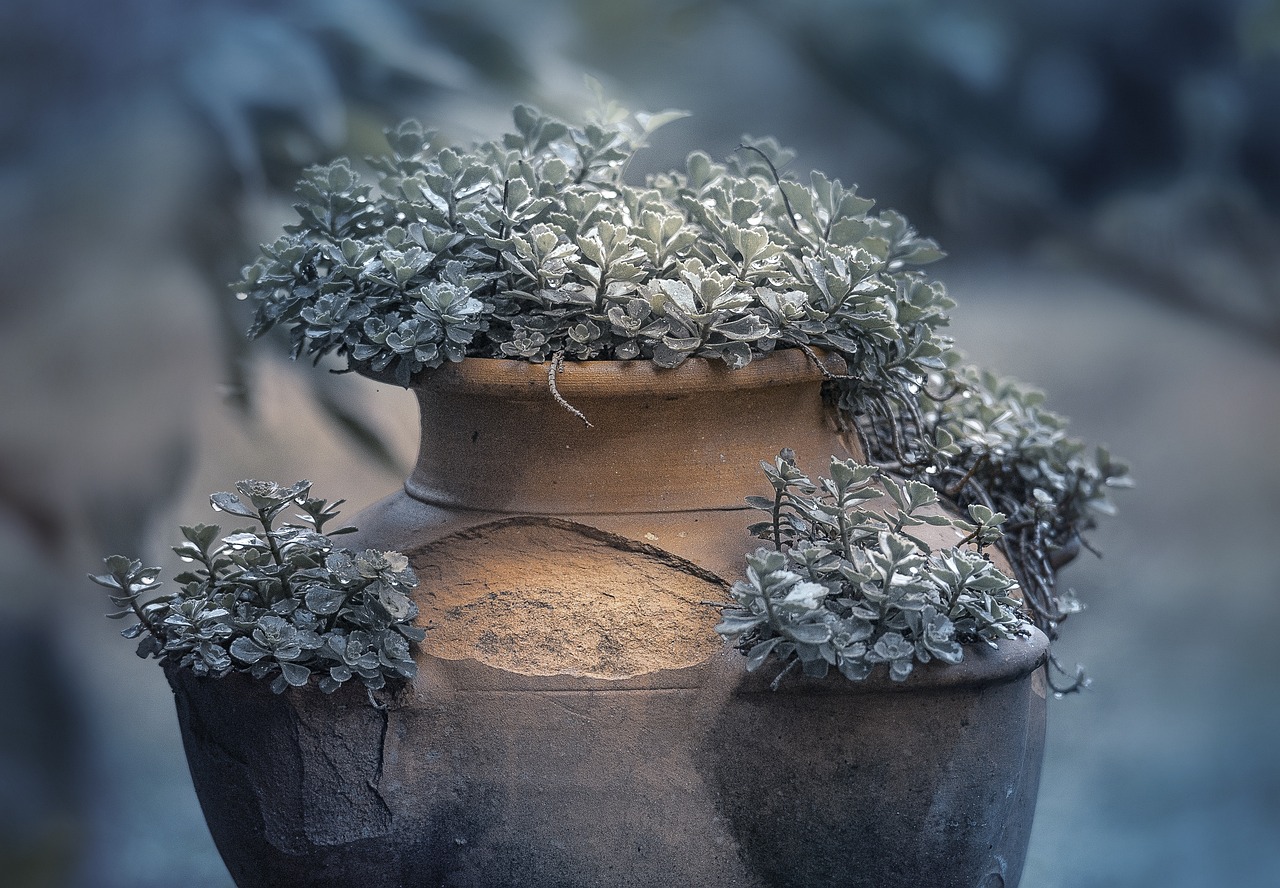
Creative Ways to Use Ceramic Pottery in Your Garden
When it comes to enhancing your garden's charm, ceramic pottery is like the cherry on top of a sundae—it's the finishing touch that can make all the difference. But how can you creatively incorporate these beautiful pieces into your outdoor space? Let's dive into some imaginative ideas that will not only elevate your garden's aesthetics but also add a touch of personality.
One of the most popular ways to use ceramic pottery is as decorative planters. Imagine a cluster of vibrant ceramic pots in various sizes, each housing different plants. You can create a stunning focal point by grouping these pots together on a patio or along a garden path. Mixing and matching colors and textures can create a visual feast for the eyes. For instance, you might opt for a set of bright blue pots against a backdrop of lush green foliage, making the colors pop even more.
Another creative idea is to use ceramic pottery as garden sculptures. Yes, you heard that right! Large, artistic ceramic pieces can serve as eye-catching sculptures that draw the gaze of anyone walking by. Think of a beautifully crafted ceramic bird or an abstract shape that complements the natural landscape. Position these pieces strategically in your garden to create a sense of flow and intrigue.
You can also transform your ceramic pots into water features. By placing a smaller pot inside a larger one and filling it with water, you can create a serene mini-waterfall or fountain effect. Add some aquatic plants or floating candles, and you’ve got a tranquil oasis. The sound of trickling water combined with the visual appeal of ceramic pottery can create a peaceful atmosphere, perfect for relaxation.
Don't forget about the idea of using ceramic pottery for vertical gardens. If space is limited, consider hanging smaller pots on a wall or fence. This not only saves space but also adds dimension to your garden. You can create a stunning living wall filled with herbs, succulents, or flowers that cascade down, bringing life to vertical surfaces.
Finally, think about using ceramic pottery as themed displays. For instance, you could create a whimsical fairy garden in a large ceramic bowl or pot. Fill it with miniature plants, tiny figurines, and decorative stones to craft a magical scene. Alternatively, you could arrange a seasonal display with ceramic pots that reflect the changing seasons—think pumpkins in the fall, festive ornaments in winter, and vibrant flowers in spring and summer.
In conclusion, ceramic pottery offers endless possibilities for creativity in your garden. Whether you use them as planters, sculptures, water features, vertical gardens, or themed displays, these pieces bring a unique flair that can transform your outdoor space into a personal paradise. So, roll up your sleeves, let your imagination run wild, and start incorporating these beautiful elements into your garden design!
Q: How do I choose the right size ceramic pot for my plants?
A: The size of the pot should be proportional to the size of the plant. A larger plant needs a larger pot to allow for root growth, while smaller plants can thrive in smaller pots. Always ensure there are drainage holes to prevent overwatering.
Q: Can ceramic pots be used for outdoor plants during winter?
A: Yes, but it's essential to take precautions. Insulate the pots with bubble wrap or burlap, and consider moving them to a sheltered location to protect them from freezing temperatures.
Q: How can I prevent my ceramic pots from cracking?
A: To prevent cracking, avoid drastic temperature changes. If possible, bring ceramic pots indoors during extreme weather conditions. Additionally, ensure that they are well-drained to avoid water accumulation.
Frequently Asked Questions
- What are the main benefits of using ceramic pottery in my garden?
Ceramic pottery offers a range of benefits that can enhance your garden's health and aesthetics. They provide excellent insulation for plant roots, helping to regulate soil temperature, which is crucial for plant growth. Additionally, ceramic pots retain moisture better than many other materials, ensuring your plants stay hydrated. Plus, their beautiful designs can significantly elevate your garden's visual appeal!
- How do I choose the right ceramic pottery for my garden?
Choosing the right ceramic pottery involves considering several factors such as size, color, and style. Think about the plants you want to pot and their size requirements. The color and design should complement your garden's overall aesthetic. Don't be afraid to mix and match styles to create a unique look that reflects your personality!
- What is the best way to clean ceramic pots?
Cleaning ceramic pots is essential to keep them looking great and functioning well. A simple solution is to use warm, soapy water and a soft brush to scrub away dirt and algae. For tougher stains, a mixture of vinegar and water can work wonders. Always rinse thoroughly and let them dry completely before reusing!
- How should I store ceramic pottery during the winter?
To protect your ceramic pottery in winter, it’s best to store them in a dry, sheltered location, away from harsh weather. If you can't bring them indoors, consider wrapping them in bubble wrap or burlap to insulate them against freezing temperatures. This will help prevent cracks and prolong their lifespan.
- Can I use ceramic pottery for outdoor plants year-round?
Absolutely! Ceramic pottery is suitable for outdoor plants year-round, provided you take the necessary precautions during extreme weather. Ensure proper drainage to prevent water accumulation, which can lead to root rot. During winter, consider protective measures to shield them from frost.
- What creative ways can I incorporate ceramic pottery into my garden?
The possibilities are endless! You can use ceramic pots as focal points by placing them at strategic locations, or create a stunning vertical garden by stacking smaller pots. Consider grouping different sizes and colors together for a vibrant display, or even using broken pieces as decorative mulch or garden art!



















